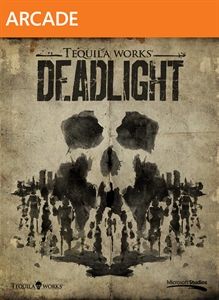 I have long been a sucker for “real-time”, dramatic side-scroller platformer games. It’s not a big genre. I mean, technically we’re talking the same sort of gameplay that’s been around for decades (perhaps most famously in the original Super Mario Bros.), but there’s a certain specific vibe to the ones I’m referring to, which I first encountered back in my college days playing a French import called Another World, or Out of this World in the U.S.
I have long been a sucker for “real-time”, dramatic side-scroller platformer games. It’s not a big genre. I mean, technically we’re talking the same sort of gameplay that’s been around for decades (perhaps most famously in the original Super Mario Bros.), but there’s a certain specific vibe to the ones I’m referring to, which I first encountered back in my college days playing a French import called Another World, or Out of this World in the U.S.
It was this immersive, cinematic sense of being there, despite the platform format. Things were happening that could have been cutscenes in other games, but required your interaction to see the protagonist through safely. Recently, the most stellar example of this I encountered was a game called Limbo, which inspired a whole Satellite Show blog from me on its virtues. I highly recommend checking that out if you want my further ramblings on generally what really floats my boat about the style.
Part of what made Limbo so great was its moody, color-leached, dreadfully atmospheric style…
…and then I found another game that took all of that and applied it to a zombie apocalypse.
Deadlight came to me courtesy of an Xbox Live Arcade download, as I was randomly browsing for things to do in the wake of finishing the main quest of Skyrim. I played through the free trial, and was impressed enough to spring for the full game, which at 600 Microsoft Points is about the equivalent of eight U.S. dollars. The development company is based out of Spain, but unlike others of its genre that precede it, Deadlight actually has extensive spoken audio and story segments in between the platformer play. I don’t know how it is outside the U.S. version, but the action of the game takes place in and around Seattle, Washington, and the English voice actors and scripting are, by and large, pretty decent. You take on the role of Randall Wayne, a former forest ranger from a small town in British Columbia, who is trying desperately to find his wife and daughter in the wake of a world gone to hell because of… you guessed it… the dead returning to life with a hunger for living flesh. They are not referred to as zombies, keeping to the usual trope, but as “Shadows”, because of being shadows of what they once were. I kind of liked that. Also the fact that the game is such a leached, nearly monochrome palette that everything tends to be in silhouette, so yes, a lot of times they just seem like black shadows pursuing you with unnaturally glowing eyes.
I could even go further than that and talk about the deliberate choice the game developers made to backdate this particular apocalypse to the year 1986. Yes, the zombies are still caused by plague like they would be nowadays, but there’s some good old paranoia about commies and nuclear war, and when I thought about that, I thought about how the only nukes ever used against a human population left those awful shadows behind.
You can start playing right away, but you can also take the time to peruse the protagonist’s 60 page journal. There are missing pages. You may find some of those pages in the course of your journey, along with other mementos. If that doesn’t seem to make sense, well, by the end of the game, it will. You may see the ending coming a mile off, or may end up entirely surprised by it. Either way, it may be a twist that I’ve seen before, but I still found it compelling enough in its execution. As far as the cutscenes went, I’m not a big fan of motion comics, but I’m much more forgiving in the case of an indie developer that can’t afford full animation, and in this case they worked decently enough for me.
Getting chased by zombie hordes and crazed militia through this sort of a game was a concept long overdue, and it’s amazing it took this long for someone to go through with it. They even included a stamina meter which determines not only how long you can swing your fire axe around keeping the shadows at bay, but how long you can hang off that ledge while figuring out where to go next. In the best zombie apocalypse fashion, one shadow is easy to deal with, but three or more means you’re better off running.
Deadlight may not be for everyone, but hey, that’s why it’s good there’s a free trial. If you’ve got Xbox Live, I highly encourage giving it a looksee… and if you were caught up like I was, the full experience isn’t too much out of your wallet.









 Sometimes it’s nice just to kick back and watch a movie for the sheer hell of it. Last week I got all deeply analytical and philosophical on the subject of Once Upon A Time In The West, a film made with meticulous care and a measured, operatic pace.
Sometimes it’s nice just to kick back and watch a movie for the sheer hell of it. Last week I got all deeply analytical and philosophical on the subject of Once Upon A Time In The West, a film made with meticulous care and a measured, operatic pace.